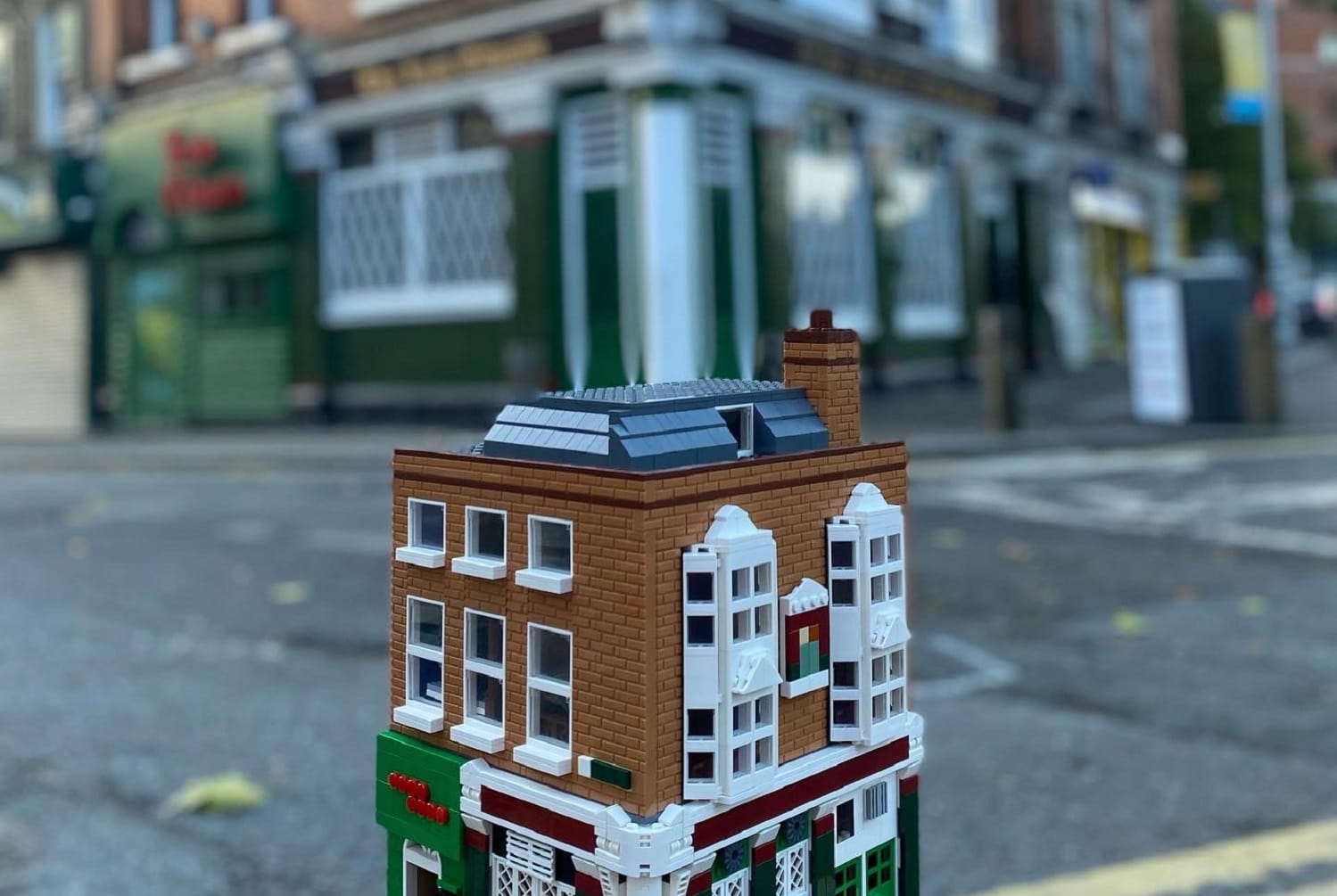What’s the best way to tell area residents about plans for a new asylum shelter nearby?
The government should tell communities directly about plans for new asylum shelters, some activists and politicians say.
“Sorry that was the postman with more Lego pieces,” says Gianni Clifford.

“Hold on, sorry. I think I hear the doorbell. Would you mind if I check?” says Gianni Clifford.
He gets up and leaves the frame of the Zoom call. Behind his chair is the old yellow, blue, and red crest of Dublin made entirely out of Lego.
Twenty seconds later, he re-enters the frame. Clifford is in his 30s, with a thick brown moustache and jet black hair slicked to the right.
“Sorry that was the postman with more Lego pieces,” he says.
The postman often brings deliveries like this to Clifford.
He works as a product design manager at the software company Zendesk, but in his spare time Clifford builds lego replicas of famous Dublin pubs.
For Clifford, re-creating these famous Dublin landmarks is an escape, he says, a way to take his mind off the outside world.
Clifford has been playing with Lego since he was a young boy.
Lego Forbidden Island was his first set, he thinks. A plastic beach landscape, a refuge for pirates and sharks.
Lego is a portal to his childhood, he says.
About a year and a half ago, he began to build iconic Dublin pubs with Lego. “I’m an extremely proud Dubliner and northsider,” he says.
One of his first was Grogan’s, the famous literary pub on South William Street in the city centre.
His model has people enjoying a drink in the outside smoking area. Inside, there’s the cheese toastie station.
He’s also built a Lego replica of the old Bernard Shaw on South Richmond Street, complete with Big Blue Bus. There’s Anseo, too, with its upstairs gig area.

Some Lego builders use software to help them design and conceive creations, he says.
Clifford prefers to use his mind. It’s more fun that way, he says. “My preference is to enjoy it and not to be too mathematical about it.”
Assembling the pieces together can be trial and error but he follows a rough process.
It starts with the base plate, the sheet of lego on which everything else is built. Next, he sources the bricks.
Mostly, he’ll get his equipment from the official Lego website. But sometimes, for rarer pieces he’ll go to BrickLink, an Aladdin’s cave of parts and sets where legions of Lego fans trade and sell.
“It’s the equivalent of eBay but it’s just for Lego,” he says.
He holds up a Lego dinosaur fossil piece. It’s for an upcoming project that he’s working on.
“It’s a great way to clear your mind,” he says of reconstructing Dublin.
Replicating the details of a well-known place has its challenges, he says. Figuring it out, though, gives a real sense of achievement.
“People get bombarded with Covid updates, the number of deaths, the number of new cases or the American presidential election and everything in between,” he says.
Solving puzzles and getting creative is a way to just step away from the outside world, says Clifford. “It’s a way to get in touch with your inner child which is a positive thing.”
Clifford has more to build, he says. He’s halfway through his next Dublin landmark building. A secret for now, he says.
He also plans to sell pieces for miniature Poolbeg stacks and Grogan’s pubs on his website. So others can build at home, too.
It’s a way to encourage others to pick up Lego and discover their creative side, he says.
“Even if people see something that I build and it makes them smile then that is a job well done from my perspective,” Clifford says.
Get our latest headlines in one of them, and recommendations for things to do in Dublin in the other.